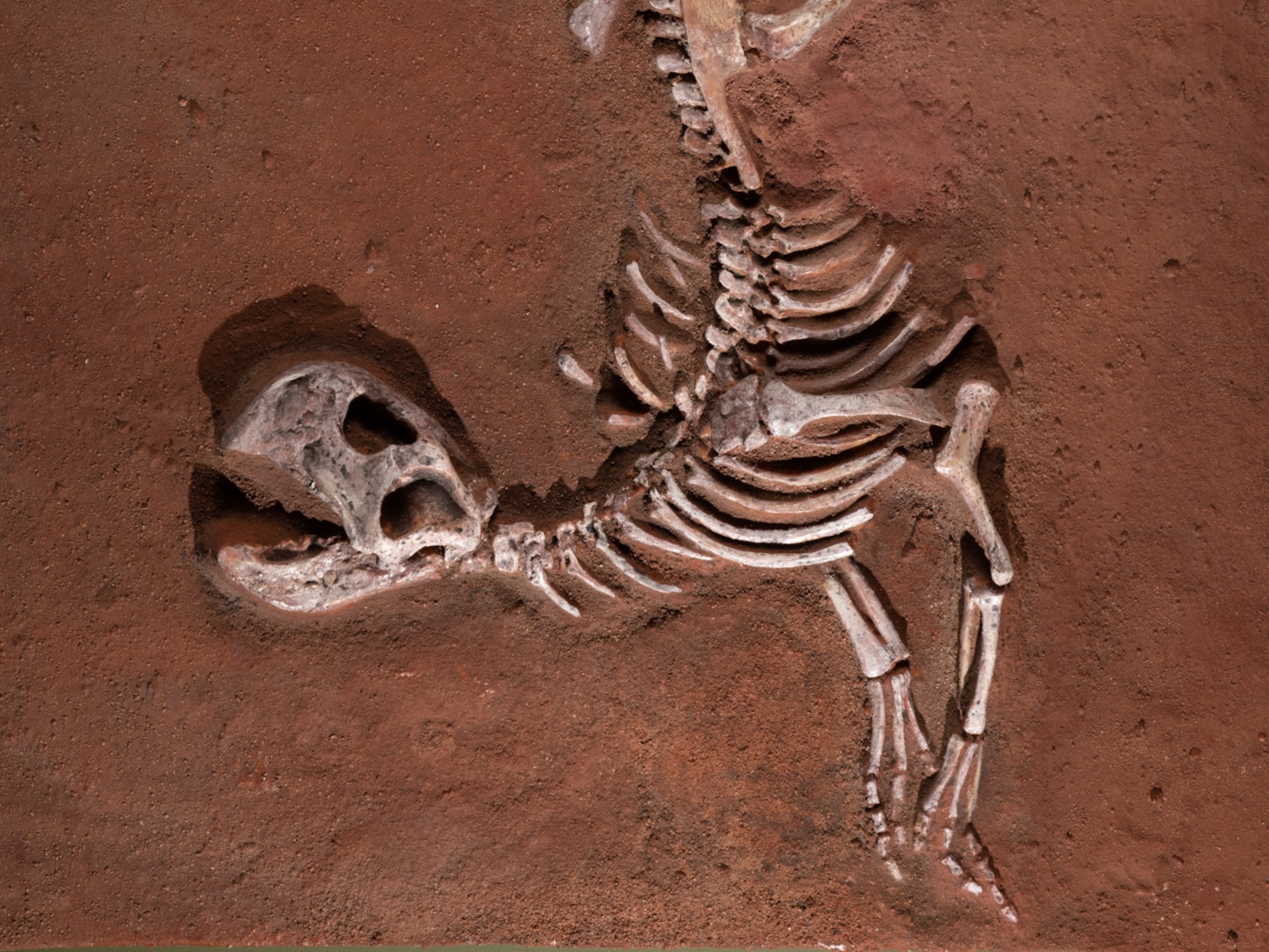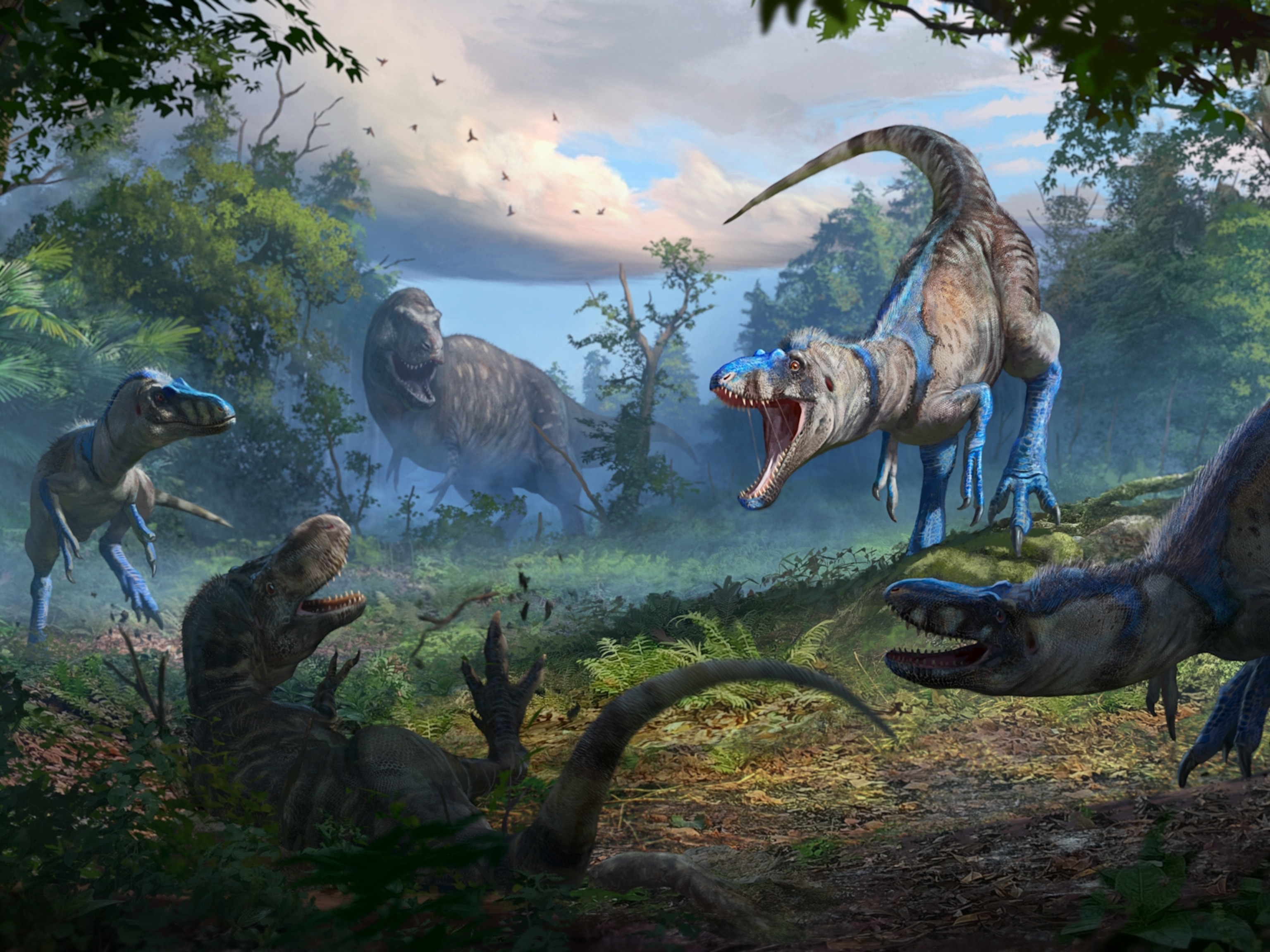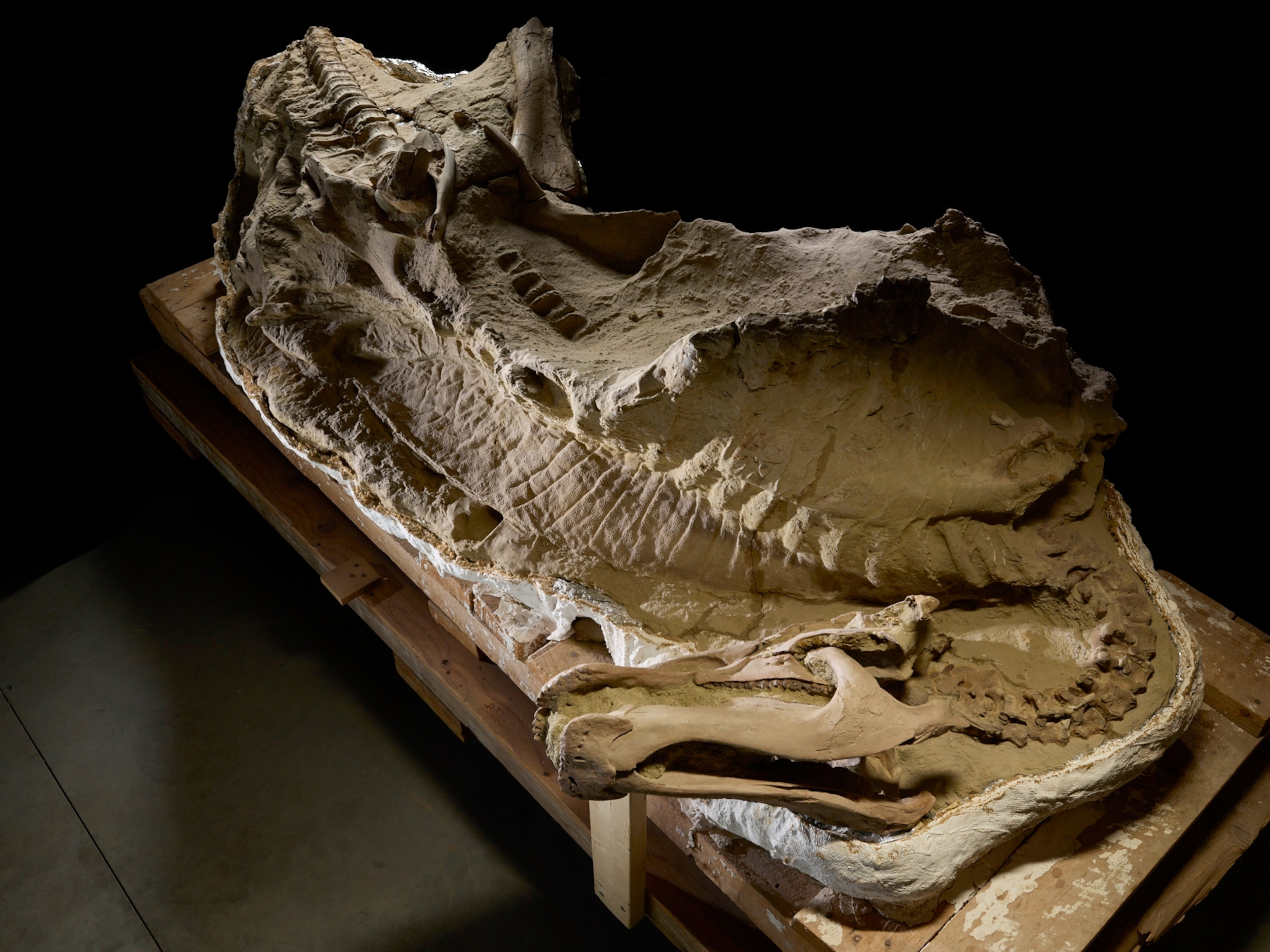
Fossils Suggest Modern Sharks Are More Evolved Than Previously Thought
A 325-million-year-old fossil fish shows that evolution hasn't left sharks alone.
Paleontologists have long thought that sharks hit on the right combination of body shape and internal anatomy early on, and that evolutionary forces didn't tinker much with the design over the following hundreds of millions of years. But a handful of bones in a 325-million-year-old shark-like fossil could upend this idea.
Structures that supported the fossil shark's gills more closely resemble those of modern-day bony fishes—like tuna or goldfish—than those of living sharks, reports a team of researchers led by the American Museum of Natural History (AMNH) in New York City. The arrangement of these bony or cartilaginous arches is also similar to the gill supports found in ancient, extinct fishes called placoderms and acanthodians.
Rather than being "living fossils," "modern sharks are in this respect evolutionarily quite advanced," said study co-author John G. Maisey, a vertebrate paleontologist at the AMNH.
If scientists want greater insight into these gill supports—which are believed to have given rise to the vertebrate jaw and human ear bones—as well as early fish evolution, they should look to modern fishes rather than living sharks, Maisey and colleagues argue in their study, published today in the journal Nature.
Peering Into the Past
Sharks have been held up as good examples of a primitive jawed vertebrate for hundreds of years, said Maisey. "And yet, there's never been an attempt to look at early fossil sharks." That's partly because there's a limited number of well-preserved gill arches from ancient sharks, and partly because of limitations in technology.
Maisey and colleagues were lucky enough to find a well-preserved fossil in the Ozark Mountains of Arkansas. The fossil contained the three-dimensional arrangement of the gill arches in a newfound species of ancient shark, Ozarcus mapesae. They were able to scan the fossil and create a high-resolution computer model of the bones.
They compared O. mapesae's gill arch arrangement with that found in ancient and modern fish. "The basic arrangement we found in Ozarcus would characterize the common ancestor of all these forms," Maisey said.
Modern sharks, though, have a different arrangement of gill supports that likely evolved after O. mapesae. So if scientists want to study the evolution of these arches and the jaws that followed, they shouldn't be looking at modern-day sharks, Maisey and colleagues concluded. They should be studying bony fishes instead.
"We're throwing down the gauntlet," said Maisey. "This is the real condition in an early shark, and it changes how we have to think about the evolution of jawed vertebrates."
A Place on the Family Tree
Data from sharks and fishes during this time period, around 325 million years ago, is so rare that any new information is welcome, said Martin Brazeau, a paleontologist at Imperial College London. "The ultimate conclusions [to this study] could very well change a bit, but I think the general picture's solid."
However, Brazeau, who was not involved in the new study, cautioned that the paper's authors did not include something called an "outgroup" in their analysis. "You can think of it like a control group in an experiment," he said. An outgroup can tell you whether the characteristic you're looking at, gill arch arrangements in this case, is a novel or ancestral feature within a group of organisms. (See "Fish Fossil Has Oldest Known Face, May Influence Evolution.")
But part of the reason the researchers didn't perform a more comprehensive analysis, Maisey said, is because there are so few fossils with which to compare gill arch arrangements.
Matt Friedman, a paleontologist at the University of Oxford in the U.K., agreed that the correct placement of Ozarcus within the fish family tree will need some more study. But he's excited because the field is in a kind of renaissance—thanks to advances in technology that allow studies like this—in how researchers look at the evolution of these animals.
Shark enthusiasts can't expect the idea that sharks are living fossils to disappear all that quickly, though. "It's an entrenched idea," said Friedman. "You see it in textbooks." Changing those will take time.
Follow Jane J. Lee on Twitter.




